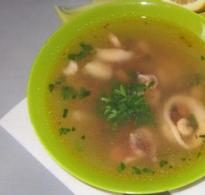calcium acetate sulfuric acid. calcium acetate
Ca(CH 3 COO) 2 . Its traditional name "burnt-wood salt" dates back to the days when the substance was obtained by dry distillation of wood. Often this reagent is available in the form of Ca (CH 3 COO) 2 ∙ H 2 O monohydrate.
Properties
Calcium acetate salt is an amorphous or in the form of needle-like crystals, colorless, with a sour taste and a slight smell of vinegar. It is highly soluble in water, insoluble in alcohol. When heated to +160 °C, it melts and decomposes into acetone and calcium carbonate. Does not burn, does not explode.
It is not toxic to humans, it is considered a safe substance, but it can cause allergic reactions and individual intolerance. When working with it, you should use protective equipment, work in a ventilated room, do not take the reagent inside. It is impossible to dry and store the substance near an open flame (when heated, it decomposes into flammable and toxic acetone). Calcium acetate salt is stored in bags or boxes with polyethylene liners, in dry rooms, at a temperature of -20 to +35 °C.
Application
 — The main area of use is the food industry. This is a food additive E263 allowed in the Russian Federation, the European Union and the USA. It is used in baking bakery products to protect them from "potato disease", which makes the bread pulp sticky, inedible, with an unpleasant odor.
— The main area of use is the food industry. This is a food additive E263 allowed in the Russian Federation, the European Union and the USA. It is used in baking bakery products to protect them from "potato disease", which makes the bread pulp sticky, inedible, with an unpleasant odor.
- Calcium acetate has a pronounced antimicrobial effect, prevents fungi and bacteria from multiplying, therefore it is an effective preservative.
- The reagent is added to various canned fruits and vegetables in order to make their sour taste less pronounced.
- Calcium acetate is a melting salt, with the help of which a greater density of plant tissues is achieved.
- In pharmacology, the ability of a substance to normalize the calcium balance in the human body is valued. At the same time, calcium acetate (trade name Nephrodin) does not cause vascular mineralization, so it can be used by patients with renal failure of any degree, even by those who undergo hemodialysis procedures. In addition, the substance actively binds phosphates, does not contain magnesium and aluminum, and is poorly absorbed in the intestine. The reagent is used in pharmacology and as an excipient.
- In agriculture, it is used as a disinfectant additive and a preservative for adding to feed.
- In chemical laboratories, acetone, potassium acetate, esters of acetic acid are obtained using calcium acetate.
- The compound is used as a catalyst in the production of chemical fibers (lavsan).
— Calcium acetic salt is part of one of the types of dry fuel.
- In the textile industry, a chemical reagent is a stain for fabrics. 
Salt is used in perfumery and cosmetics as a flavoring agent.
Calcium acetate, as well as a wide range of other chemicals, you can find in the PrimeChemicalsGroup store. We also sell laboratory glassware and equipment, protective equipment, medical supplies. There is a delivery, but pickup from Mytishchi is also possible. Qualified staff will help you choose the right product. Our prices and level of service will pleasantly surprise you.
2.7 out of 5Calcium acetate is the calcium salt of acetic acid. In the old days, the substance was obtained by dry distillation of wood, which was charred and, as it were, burned, which is why the salt was called burnt-wood. Alchemists have used this method since ancient times, and it is now difficult to establish who was its inventor. To date, the substance is extracted by the action of acetic acid on the oxide, hydroxide or calcium carbonate. It is not used in heavy industry, only in food industry, where it is registered as a food additive and a group of preservatives E263.
Calcium acetate is used as a preservative, plant tissue thickener, and acidity regulator. Most often used for the production of bakery products.
Also used in the conservation of feed in the agricultural industry. However, it is desirable to use this additive with other preservatives due to the presence in the products of sulfates, carbonates and bicarbonates, as well as phosphates, which can precipitate with a cation.
In addition, this substance is used for the production of acetone. In the pharmacological industry, due to its antimicrobial and antiviral properties, it is used as a disinfectant.
In medicine, the property of calcium acetate to restore a positive calcium balance, and, unlike calcium carbonate, does not lead to calcification of blood vessels and soft tissues, allows it to be used by patients with renal insufficiency, as well as those who are on hemodialysis.
Another use is in the preparation of dry alcohol, by mixing with ethyl alcohol. In chemistry, calcium acetate is used together with potassium acetate in exchange reactions..
Properties of calcium acetate
It is a crystalline substance that dissolves in aqueous solutions. Characterized by acetic smell and taste. It has the properties of a preservative, and as such is used in the food industry.
It is able to stop the development of pathogenic bacteria in bakery products, as well as soften the sour taste of canned fruits and vegetables.
One of the properties of calcium acetate is the ability to prevent the appearance and development of "potato disease"caused by a certain type of bacteria.
In addition, it exhibits the property of a catalyst in the production of lavsan.
The harm of calcium acetate

To date, according to the international classification, the preservative E263 has been assigned the status of "conditionally safe" for human life and health. It contains potassium acetate, which is obtained by the action of calcium carbonate on the acid. It is he who determines the properties of the additive.
At the moment, the negative effects of this preservative and the harm of calcium acetate to humans have not been confirmed and are not scientifically substantiated. That is why it is banned in some countries. However, in Europe, the USA and Russia, the use of the additive in food production is allowed.
The main harm of this preservative is in the chemical composition of the compound. Allergic reactions and individual intolerance are possible. Calcium acetate, according to scientists, does not have a carcinogenic, poisonous or toxic effect on the human body. However, it can provoke severe allergic reactions up to asthma attacks.
Physicians today have not established clear norms for the consumption of this substance in food as part of food industry products. However, doctors recommend that children exclude foods that contain this food additive and other unsafe preservatives from the diet.
Popular Articles

Losing weight may not be a quick process. The main mistake of most losing weight is that they want to get amazing results in a few days of sitting on a starvation diet. But after all, the weight was not gained in a few days! Extra kilos...
The disinfectant properties of calcium acetate have been known for a long time. Gone are the days when a valuable substance was obtained by burning wood in a closed container without air (hence the outdated term burnt-wood salt).
An environmentally friendly preservative is obtained by chemical synthesis. The value of food additive E 263 is in the ability to stop the development of pathogenic bacilli, regulate the acid balance and improve the appearance of pickled products.
Technical conditions for the use of food grade calcium acetate are regulated GOST R 54537–2011.
In the European codification, the food additive is designated by the index E 263 (E-263).
The generally accepted (including trade) name is Calcium acetate, the international synonym is Calcium Acetate. Chemical name - Calcium acetate.
Less common synonyms:
- lime acetate;
- calcareous pyrolignite;
- grayish acetate.
In German, the additive E 263 is designated Kalziumazetat, the French version is Acetato di calcio.
Substance type
Food supplement E 263 is included in the group. Chemically, it is a calcium salt.
The production process is simple, does not require large financial costs.
Sandalwood is not used as a food coloring due to the high cost of raw materials and high toxicity. Read more about this.
Main manufacturers
The food and medical industry uses raw materials supplied by enterprises:
- Nord Plus, part of the NORD group of companies (St. Petersburg);
- Ural plant of chemical reagents (Sverdlovsk region);
- Tongyuan Lianyungang Specialized Chemicals Factory (China), a leading player in the nutritional supplement market.
The effect of food additive E 263 on the human body has not been fully studied. Some scientists are convinced of its complete safety and even usefulness as a source of calcium.
Others tend to believe that the substance is an allergen that can cause an asthma attack.The controversy has led to the designation of the preservative E263 as conditionally safe (according to the Joint Committee of Experts on Food Additives).
The invention relates to the production of salts of acetic acid. Calcium acetate is produced by treatment of oxide, hydroxide, calcium carbonate or mixtures thereof with 52-65% acetic acid at a stoichiometric ratio of initial components, followed by crystallization and drying of the product. Crystallization is carried out by keeping the product for at least 16 hours, and its drying is carried out at 80-100°C. As a result, the yield of calcium acetate rises to 88-96%, and at the same time a high degree of product purity is achieved. 1 z.p. f-ly, 1 tab.
The invention relates to methods for producing salts of acetic acid, in particular calcium acetate. A known method for producing calcium acetate, which consists in the interaction of calcium carbonate with acetic acid when heated, followed by filtering the solution and evaporating the filtrate with constant acidification. After cooling the filtrate, the precipitated crystals of calcium acetate are separated on a Buechner funnel and dried at 60-70 o C. The yield of the target product is 53% of the stoichiometric value, the purity is about 100% (Karyakin Yu.I., Angelov I.I., Pure chemical substances, M., Chemistry, 1974, p. 153). This method makes it possible to obtain calcium acetate with a purity that meets the requirements for chemical reagents. The implementation of this method is quite complex and energy intensive. The implementation (development) of this method in large-capacity production is impractical for a number of reasons. The main disadvantages of the calcium acetate crystallization method from dilute solutions are as follows: 1) low yield of calcium acetate crystal hydrate due to its high solubility in water (~ 30%); 2) separation of crystals on the filter; 3) the presence of a filtrate with a high content of calcium acetate dissolved in water; 4) the problem of isolation of calcium acetate from the solution of the filtrate (evaporation), 5) processing and disposal of the liquid phase (filtrate). All of the above problems are removed if the reaction is carried out in the solid phase. A known method for producing calcium-magnesium acetate by the interaction of dolomite with glacial acetic acid. This method is chosen by the applicant for the prototype (Application Germany 3705618, C 07 C 53/10, 1988). The method is as follows. Oxides or hydroxides of calcium and magnesium (calcined dolomite and/or lime, respectively slaked) are treated with a slight excess (2-10%, preferably 5% relative to the stoichiometric amount) of 85-100% acetic acid, the reaction is carried out in a continuous mixer with simultaneous granulation of the reaction mixture. Water and residual acetic acid are removed at a temperature of 110-160° C. in a moving bed dryer. The purity of the finished product is ~ 70% content of soluble impurities ~ 30%. This method is quite technologically advanced, since the reaction is carried out in the solid phase. However, the final product has a low purity (low content of the basic substance), since an excess of acetic acid leads to the formation of an acid salt. In addition, the amount of acetic acid used in the known method (in relation to the amount of dolomite), as well as the duration of mixing dolomite with acetic acid, do not ensure complete completion of the neutralization reaction of acetic acid with dolomite, since under such modes the reaction proceeds only on the surface of solid particles, and acid diffusion into the particles is hindered due to the formation of calcium acetate on their surface. As a result, the final product is a mixture of calcium-magnesium acetate (~70%) and unreacted hydroxides for calcium-magnesium oxides, as evidenced by the presence of insoluble impurities in the target product. The finished product has a technical purpose, it is used to prepare mixtures that lower the freezing point of water. The objective of the invention is to develop a method for producing calcium acetate, which allows to increase the purity of the basic substance without complicating the technology. The problem is solved by the present invention, according to which, in a method for producing calcium acetate, including the treatment of oxide, hydroxide, calcium carbonate or mixtures thereof with acetic acid, crystallization and drying of the product, the treatment is carried out with 52-65% acetic acid at a stoichiometric ratio of the initial components, and crystallization is carried out by keeping the synthesis product in time for at least 16 hours. Such conditions for the synthesis of calcium acetate make it possible to increase the purity of the final product, since they ensure the complete reaction of the interaction of calcium compounds with acetic acid. At the same time, the treatment of calcium compounds with acetic acid in the selected ratio leads to the formation of an intermediate product that does not contain a liquid phase, which allows the process to be carried out without filtration. An acetic acid concentration of 52-65% is optimal for carrying out the reaction without filtration, since at concentrations of acetic acid below 52% a liquid paste is obtained, which must be filtered in order to separate solid calcium acetate crystals from a solution containing 25-30% calcium acetate dissolved in water . At a concentration of acetic acid above 65%, a mixture of calcium acetate crystals is formed with the unreacted starting material, since the acid solution is not enough, since the reaction proceeds on the surface of the solid particles, and the diffusion of the acid into the particles is difficult due to the acetate formed on their surface, as a result of which the final product is a mixture of calcium acetate with the original calcium compound. When such a product is dissolved in water, there is an insoluble CaO, Ca(OH) 2 or GaCO 3 residue. At an acid concentration of 52-65% and a stoichiometric ratio of the initial components, a thick paste is formed that does not contain an excess of the liquid phase. When the synthesis product is kept to dry for at least 16 h, white needle-shaped calcium acetate crystals are formed in the reaction vessel, which are readily soluble in water. Reducing the exposure time does not allow the neutralization reaction to complete, as evidenced by the decrease in the purity of calcium acetate and the presence of an impurity of the original calcium compound (Ca(OH) 2 , CaO, CaCO 3) in the finished product. Exposure of the product for much more than 16 hours (according to experimental data, up to 1.5 months in a closed container) does not affect its quality. The method in pilot production is carried out as follows: a stoichiometric amount of an acetic acid solution is poured into the reactor and the initial calcium compound (Ca (OH) 2 , CaO, CaCO 3) is gradually poured into the reactor or half of the initial acetic acid solution is poured, after which the compound is poured in portions, with stirring calcium for 15-30 minutes and add the remaining amount of acetic acid, cool the reaction mass to room temperature, leave the intermediate in the reactor or unload it into a polyethylene container and keep it at room temperature in a closed container for at least 16 hours. During this time, crystals form calcium acetate. Wet acetate is dried at a temperature of 80-100 o C and atmospheric pressure for 4-5 hours Drying is possible at temperatures below 80 o C, however, the dehydration time increases by 2-3 times. Drying at temperatures above 100 o C impractical, as observed decomposition of calcium acetate to calcium oxide and acetone. Example 1. Synthesis from CaO Synthesis is carried out in a CM-25 mixer with a volume of 25 l, equipped with a jacket for supplying cooling water and two Z - shaped mixers. Calcium oxide weighing 4.5 kg is weighed on a dial balance. Measure out 16.5 liters of a 55% solution of acetic acid. From this volume, 8.5 liters are poured into the mixer, cooling water is supplied to the mixer jacket, the mixer is turned on, and 4.5 kg of CaO is sprinkled in small portions over 25-30 minutes. The reaction proceeds with an increase in temperature to 80-90 o C, the volume of the reaction mass increases ~ 1.5-2 times. After lowering the temperature to 40-50 o C pour the rest of acetic acid 8.0 l. When the temperature in the reaction mass reaches 25 o C, the finished product is unloaded into an intermediate container with a volume of 30-50 l, covered with a lid and kept at atmospheric pressure and room temperature for 16 hours. Example 2. Synthesis from Ca (OH) 2 For synthesis, take 6 0 kg Ca (OH) 2 and 16.7 l of 55% acetic acid solution. The synthesis is carried out according to example 1. Example 3. Synthesis from CaCO 3 For the synthesis, 6.0 kg of CaCO 3 and 12.4 l of a 55% solution of acetic acid are taken. The synthesis is carried out according to example 1. Example 4. The synthesis of calcium acetate from a mixture of oxide, hydroxide and calcium carbonate is carried out as in example 1, while the required volume of 50% acetic acid is calculated by the formula Vacetic acid = a CaO 3.67 + B Ca(OH) 2 2.78 + C CaCO 3 2.06
where a CaO, B Ca(OH) 2 , C CaCO 3 - mass fractions of the components CaO, Ca(OH) 2 and CaCO 3, respectively;
Vacetic acid - the volume of acetic acid. For example, for synthesis, take 6 kg of a mixture (2 kg of CaO, Ca (OH) 2 and CaCO 3) and
Vux. acids \u003d 2 kg CaO 3.67 + 2 kg Ca (OH) 2 2.78 + 2 kg CaCO 3 2.06 \u003d 7.34 + 5.56 + 4.12 \u003d 17.02 l. The conditions for the synthesis and drying of calcium acetate and the obtained qualitative characteristics of the target product are presented in the table, where examples 1-11 provide data related to the claimed invention. Examples N 12-23 are given for comparison and contain data on synthesis conditions that go beyond the claimed. The results in the table prove the following:
1. The purity of the calcium acetate obtained by the proposed method is 100.1-101.4%, which is significantly higher than by the known method. The yield of the finished product is from 88.1 to 96.4%
2. When using acetic acid above the stoichiometric ratio, an acid salt is formed (examples N 12-14), which reduces the purity of the product;
3. When holding wet acetate for less than 16 hours, the recrystallization of the product does not go to the end and when dry acetate is dissolved in water, there is an insoluble impurity of the initial calcium compound, in this case the purity of the product and the yield are removed (examples N 15-17);
4. With an increase in the concentration of acetic acid above 65%, the reaction in the solid phase does not go to the end, and when dry acetate is dissolved in water, there is also an insoluble impurity of the initial calcium compound, in this case, the purity of the product and the yield decrease (examples N 18-20);
5. Increasing the drying temperature over 100 o C reduces the drying time, but leads to partial decomposition of the finished product and reduce its purity and yield (examples N 21-23). Literature
1. Karyakin Yu.I., Angelov I.I. Pure chemicals. M. Ed. Chemistry. 1974. S. 153. 2. Application of the Federal Republic of Germany N 3705618, IPC G 07 C 3/10, priority 21.02.87.
Claim
1. A method for producing calcium acetate, including the treatment of oxide, hydroxide, calcium carbonate or a mixture thereof with acetic acid, crystallization and drying of the product, characterized in that the treatment is carried out with 52 - 65% acetic acid at a stoichiometric ratio of the starting components, crystallization is carried out by holding in time of the synthesis product is not less than 16 hours. 2. The method according to claim 1, characterized in that the drying of the product is carried out at 80 - 100 o C.
The invention relates to an improved method for producing cobalt salts of monocarboxylic acids C2-C3 (MCA), in particular their aqueous solutions, which are used in the chemical industry as reagents and raw materials for the production of cobalt catalysts
The invention relates to organometallic chemistry, namely to new compounds, specifically to salts of (4-hydroxy-3,5-di-tert-butylphenyl)-propionic acid of the general formula where R = C(CH3)3, Me is a metal selected from groups: Zn, Ba, Ca, Cd, Al, Sn, Mg, Cr + 3, Mn + 2, n - metal valency, n = 2 - 4, which can be used as a polymer stabilizer and oil additives
The invention relates to the field of synthesis of organic metal salts, such as metal 2-ethylhexanoates, which are used in the production of polymeric materials, stabilizers and modifying additives that allow changing the rheological properties of polymeric materials, as well as additives to dyes, varnishes, lubricants and raw materials for deposition of complex oxide films
A remedy that compensates for calcium deficiency and stimulates anabolic processes. Calcium ions are involved in the transmission of nerve impulses, contraction of smooth and striated muscles, the functioning of the myocardium, blood coagulation, are necessary for the formation of bone tissue, maintaining electrolyte balance and the functioning of other systems and organs. Normalizes exchange...

C 12 H 22 CaO 14
Antacid, neutralizes free hydrochloric acid in the stomach. Calcium is a macroelement involved in the formation of bone tissue, the process of blood coagulation, it is necessary to maintain stable cardiac activity, and to carry out the processes of transmission of nerve impulses. ...

Calcium preparation: regulates phosphorus-calcium metabolism, replenishes Ca2+ deficiency in the body, has anti-inflammatory, anti-rachitic and hemostatic effects. Accelerates all phases of blood coagulation, increases platelet adhesion, promotes rapid entry of tissue thromboplastin into the blood. Ca2+ ensure the normal transmission of nerve impulses, keeping the tone smooth and...
Calcium is a macroelement involved in the formation of bone tissue, the process of blood coagulation, it is necessary to maintain stable cardiac activity, the processes of transmission of nerve impulses. Improves muscle contraction in muscular dystrophy, myasthenia gravis, reduces vascular permeability. When administered intravenously, calcium causes excitation of the sympathetic nervous system and ...

C 2 H 4 O 2 .1/2Ca
The substance absorbs phosphorus from the gastrointestinal tract, reduces its serum level. Also, the agent has the ability to restore a positive Ca balance in patients with kidney disease of any severity (including those undergoing hemodialysis or peritoneal dialysis). ...

C 20 H 23 CaN 7 O 6
The acidic form of calcium levomefolate is structurally identical to natural L-5-methyltetrahydrofolate (L-5-methyl-THF), the main folate form found in food. The average plasma concentration in people who do not use food enriched with folic acid is about 15 nmol / l. Levomefolate, unlike folic acid, is biologically...






